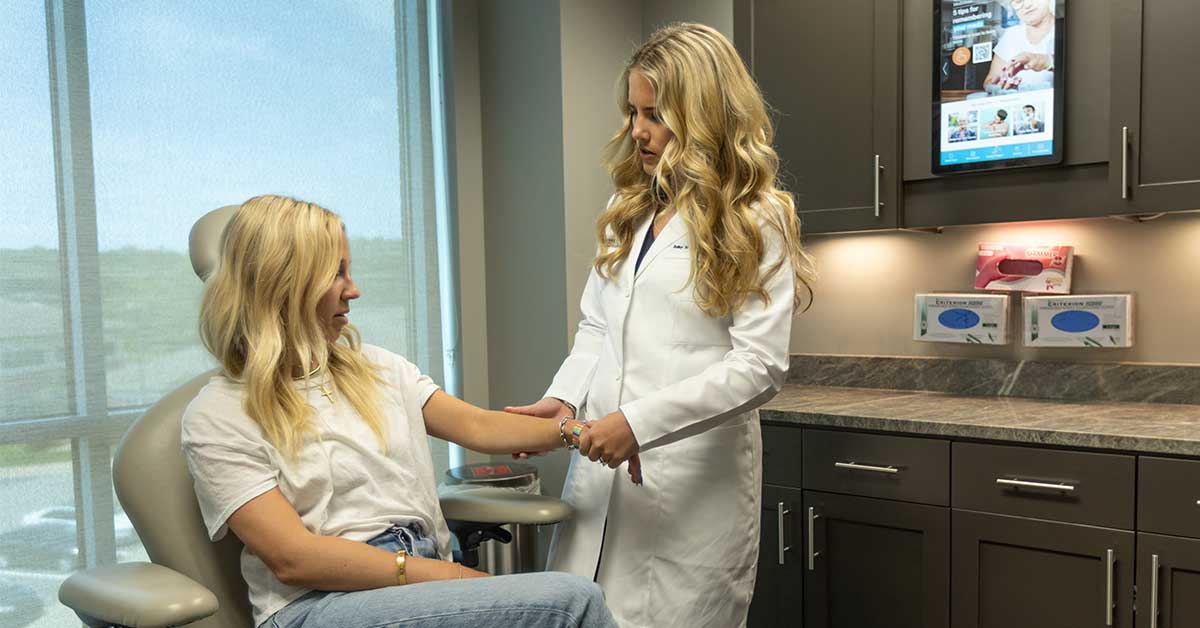Is it Redness or Rosacea? Here’s How to Tell

Redness or Rosacea?
When you think of facial redness, you might picture rosy cheeks from exertion or embarrassment. But when that redness lasts for more than a few minutes, it could be a sign of rosacea.
Rosacea is a chronic skin condition affecting approximately 16 million Americans. It’s characterized by redness on the cheeks, nose, chin, or forehead. Over time, the redness can become more intense, taking on a ruddy appearance with visible blood vessels.
The primary symptoms of rosacea include enlarged capillaries leading to persistent redness, a sensation of heat, and sometimes a stinging feeling. The exact cause remains elusive, but it’s thought to be a combination of hereditary and environmental factors.
Red Skin vs. Rosacea: Spotting the Difference
When it comes to distinguishing between ordinary red skin and rosacea, there are a few key things to consider.
For example, normal facial redness—such as what occurs after vigorous exercise or a brisk walk in the cold—is directly linked to a specific cause and doesn’t last very long. Rosacea, on the other hand, often presents as a persistent redness that doesn’t quickly fade away.
If you’re not sure which you’re experiencing, take note of the following factors: duration, triggers, and accompanying symptoms.
Duration
How long does the redness last: minutes, hours, or days? Temporary redness from exercise or stress is a normal skin reaction, but persistent redness can indicate rosacea.
Triggers
Do certain situations, foods, or environmental factors seem to initiate or worsen the redness? It’s important to understand what triggers your skin to flush. Common culprits include heat, spicy foods, alcoholic beverages, and emotional stress.
Accompanying Symptoms
Are there any other signs like swelling, visible blood vessels, or skin sensitivity? If not, you may be experiencing skin redness, not rosacea.
When to See A Dermatologist
Rosacea can sometimes be mistaken for things like acne or allergic reactions (and vice versa). To be certain about the health of your skin, it’s important to see a dermatologist. They can distinguish rosacea from other similar-looking skin issues through a comprehensive evaluation.
If you aren’t sure whether you’re experiencing rosacea, consult an experienced dermatologist. Early intervention in the case of rosacea may prevent the condition from worsening. Getting your rosacea diagnosed and treated early can keep symptoms in check, make flare-ups less frequent, and reduce the chances of developing other issues like thickened skin or long-lasting redness.
Treatment Options
Treatment for rosacea varies based on its severity. Dermatologists may prescribe creams or gels to reduce inflammation and redness. In more severe cases, your dermatologist might recommend oral antibiotics or acne medications. Additionally, laser therapy is sometimes used to reduce visible blood vessels.
Lifestyle changes are essential for managing this condition. Use gentle skincare products and take care to avoid common irritants like alcohol-based products and harsh exfoliants. It’s also important to protect your skin from harsh environmental conditions like severe wind and prolonged sun exposure.
Stress management, a balanced diet, and avoiding known dietary triggers are all ways to help reduce the occurrence of rosacea flare-ups. Your dermatologist may recommend that you keep a diary to track flare-ups and potential triggers.
Contact Franks Dermatology in Little Rock, Arkansas, About Diagnosing Rosacea
Understanding rosacea is the first step toward identifying it. Use the tips described above to help you determine whether you need to see a dermatologist about your red skin.
If you experience persistent skin redness, schedule a consultation with the experts at Franks Dermatology by calling (501) 246-1042. Professional diagnosis and treatment is essential for managing your symptoms and keeping your skin as healthy as possible.
